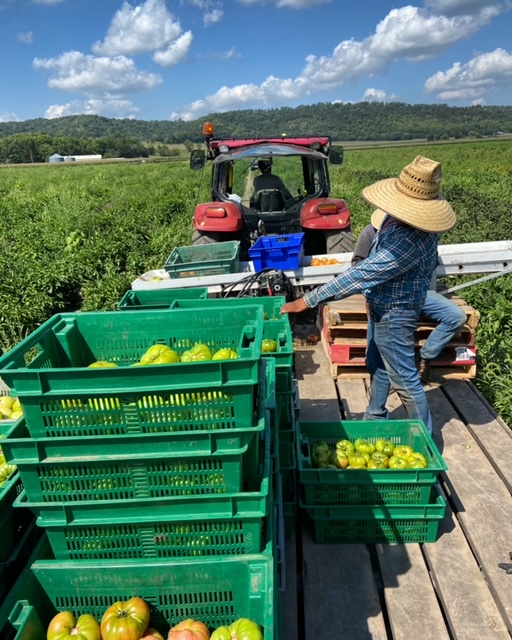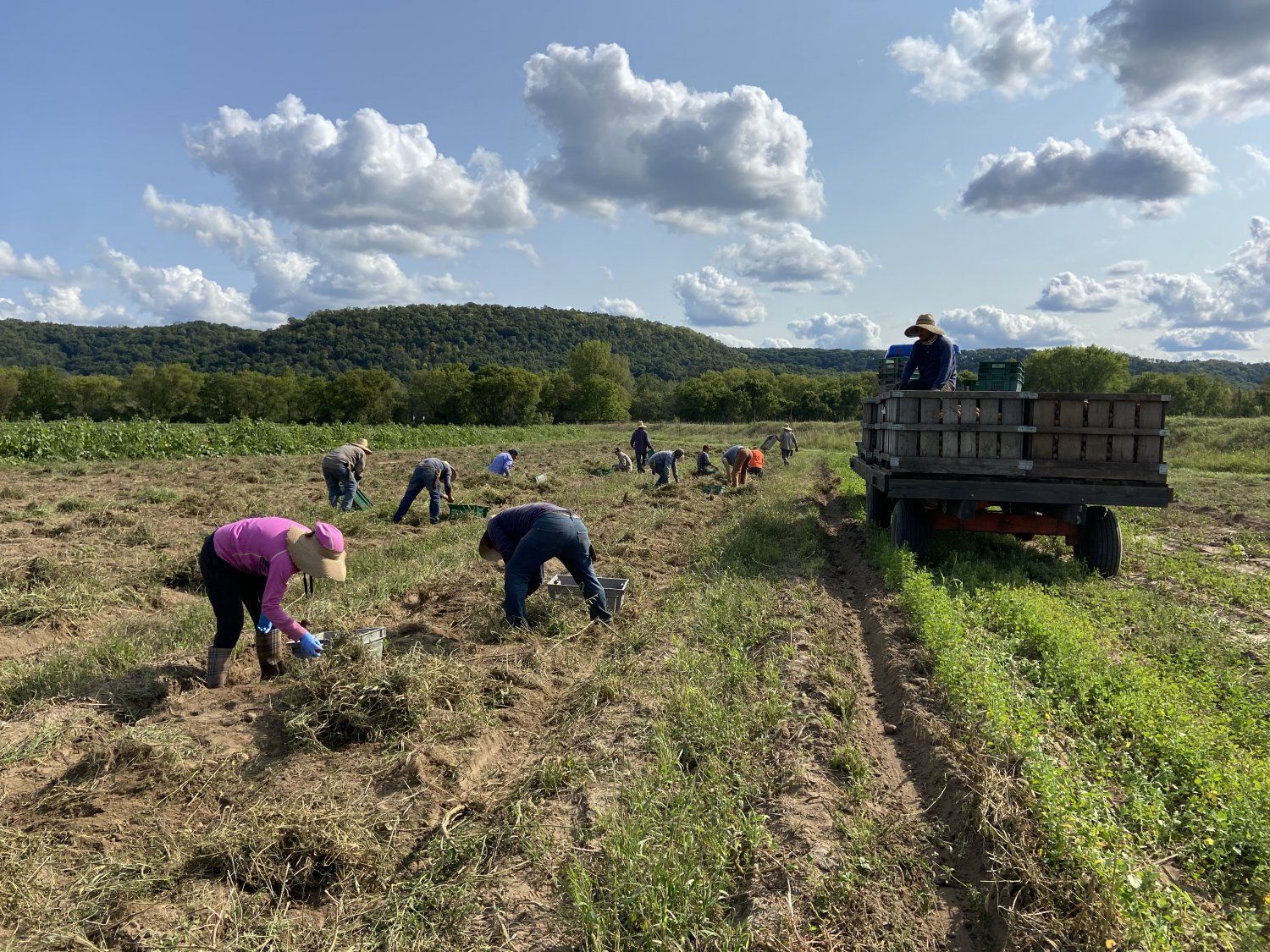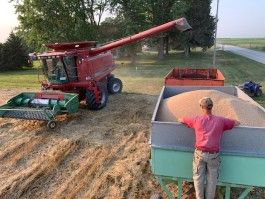It’s an unusual way to introduce the first ever Featherstone Farm winter wheat crop- and first ever Featherstone wheat flour offering in upcoming Winter CSA boxes- but I’m going to begin by talking about soil health.
Growing diverse annual vegetables requires a level of tillage that is fundamentally destructive to soil structure and soil biology. We do what we can to reduce tillage, and to plant cover crops to restore carbon and boost microbiological activity. And we often experiment with “non vegetable crops” that we could plant in the field rotation, that would be good for soil health and for the following years’ vegetable crops as well (by breaking cycles of weeds, pests and vegetable pathogens). In past years we have planted lots of grass and legume hay, as well as small grains such as oats and rye for combining.
Last fall I seeded nearly 11 acres of hard winter wheat in a field on the ridge near the Peterson Farm. The wheat germinated and grew to a height of about 4” by late fall, and provided a green living soil cover under the snow all winter.


As the soil warmed in April, the wheat began to grow vigorously again, smothering even the most determined dandelions(!!). In July we hired an organically certified neighbor to combine the grain, which yielded an astonishing 72 bushels to the acre (and 34 large round bales of straw to boot!).



Immediately after baling straw, we no-till drilled (seeded) the entire field to grass hay mixed with alfalfa, to cover the soil this coming winter. Next summer we will take one heavy crop of hay off this field, then “green chop” all regrowth to return to the soil.
By the time we plow down the hay in the spring of 2023 to plant fall storage cabbage, the soil in this 11 acre field will have enjoyed a full 32 month “vacation” from tillage. It will have received a very significant fertility boost from the legume plow-down (alfalfa). And it will have given us a wonderful crops of straw (we will use to mulch next year’s crops of strawberries and perhaps tomatoes) and of wheat, which we are introducing you to now.
What a learning experience this has all been for me! Along with work in the woods (invasive species control in winter and tree planting in spring), this wheat crop has been the highlight of the entire farm year for me, personally. And now, boy am I excited to try the wheat flour we have in the coming winter of baking!
But here’s the catch: just as it’s taken us decades to, say, learn the intricacies of growing good tomatoes in a four season environment, it will take me and everyone at Featherstone Farm a good while to get really good at growing small grains. The first year of experimentation with a new crop- or any new farm enterprise in general- is a profoundly humbling experience.
So we have distributed flour samples to many friends and neighbors in the past week, in the hopes of getting real world, expert feedback. The preliminary results of these experiments are encouraging- delicious whole wheat bread samples- but also perplexing. In particular, we have had mixed and perhaps contradictory feedback from bakers about bread density, and about how it adheres when cutting or toasting.

Liz Belina, a good friend of the farm, baked the first bread this past week!

Our goal is certainly to provide whole wheat and/ or general purpose “unbleached white” type flour in our Winter CSA boxes, which performs as well or better (taste!!) in the kitchen than any standard flour a person could buy in the store. But again… the learning curve and humility!!
Once again, the reason we choose to grow winter wheat in the first place, is to boost soil health and thereby vegetable health and productivity in the future. But we might as well have some good, whole wheat bread in the process! Next week we'll be sending out a member survey about flour in our upcoming winter CSA shares. Questions like, how often would you want a bag of flour in your share and what size would you find most useful, etc. Answers to these questions will help us to plan how much of our harvest we should save and store for our shares and what we should sell for a local distillaries use this fall.
And with all the mentions of our upcoming Winter CSA farm share, we should perhaps mention that spots are filling up fast and now is the time to sign up! If you've already signed up, thank you! If you're still considering it, just click here for all the details. And if you're ready to join, just log into your account here. Once you log in, click on the "My Farms" tab and then click on "Place Order." You'll then be prompted through the sign up process.
Again, we'll be in touch next week with our winter wheat survey so please stay tuned!
Gratefully,
Jack




